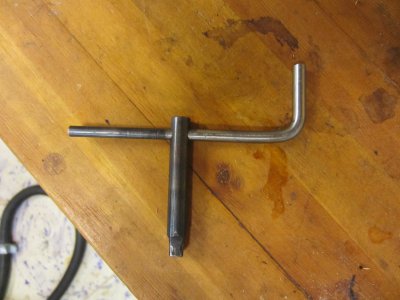- Joined
- Feb 23, 2014
- Messages
- 7
Hello group! I am noob at machining and I want to make another chuck key for my 4-jaw chuck. I know I have one to base it off of, but I have a few questions. If I were deciding what kind of stock to start with, square or round, which would be the best option? I have both a mini mill and lathe.
There is three basic parts of the main shaft. The square that fits the chuck, the remainder of the shaft that is round, and the hole in the other end that holds the other round rod. Is it best to start by turning the entire length? If you chose round stock then I would say this is the way to start. If you started with square stock, then I would think it would be easier to drill the hole in the end first, being it's easier to drill from a flat surface. Then mill down the square end since would be easier to indicate from a square stock. But all of those are based on starting with a square stock. I think if you started with round stock, then it wouldn't matter as much, so i would start with turning the entire length to size followed my either end.
Any advice or suggestions?
Scott
There is three basic parts of the main shaft. The square that fits the chuck, the remainder of the shaft that is round, and the hole in the other end that holds the other round rod. Is it best to start by turning the entire length? If you chose round stock then I would say this is the way to start. If you started with square stock, then I would think it would be easier to drill the hole in the end first, being it's easier to drill from a flat surface. Then mill down the square end since would be easier to indicate from a square stock. But all of those are based on starting with a square stock. I think if you started with round stock, then it wouldn't matter as much, so i would start with turning the entire length to size followed my either end.
Any advice or suggestions?
Scott

